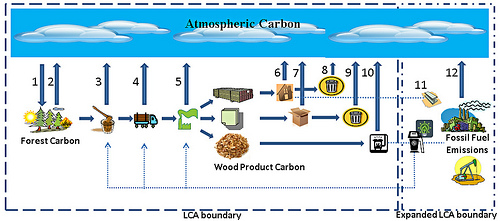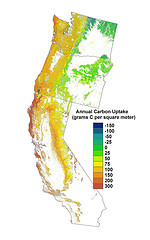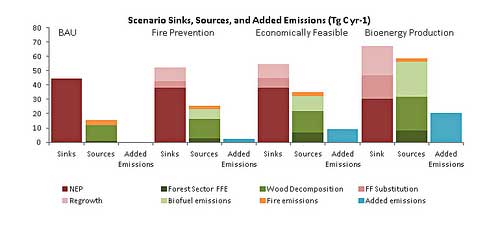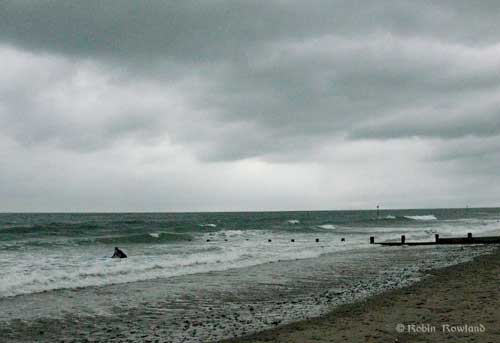A University of Washington study says that using trees from the northwest as a building material is good for carbon mitigation in the atmosphere, especially if the wood waste is also used as a biofuel to replace gasoline and other fossil fuels.
The article, published in the journal Forests, says that if timber from northwestern U.S. forests were harvested sustainably every 45 years and the wood used as a building material, where possible replacing substances like concrete or steel, which require greater amounts of fossil fuels to manufacture, that would both remove existing carbon dioxide from the air while the forest was growing and then keep the gas entering the atmosphere for years as long as it is part of a building.
It says carbon savings can be increased by using the parts of the trees
not suitable for building materials such as slash, branches and debris
as biofuel, especially ethanol.
It also notes that some forest “residual” may be too
difficult to collect to be used a biofuel or should be left to maintain
the forest ecosystem.
The lead author of the study, Bruce Lippke, professor emeritus of forest resources at the University of Washington, says, “When it comes to keeping carbon dioxide out of the atmosphere, it makes more sense to use trees to recycle as much carbon as we can and offset the burning of fossil fuels than it does to store carbon in standing forests and continuing burning fossil fuels.”
The University of Washington says this is the first study to look at using biofuels in addition to using wood from long living trees as a building material, as opposed to woody biofuels studied in isolation.
The study also looked at forests in the U.S. Northeast and Southeast, and emphasized that different regions will produce different results.
It suggests that using fast growing species, such as willow, especially in the US Southeast, could have advantages. Willow, while not usually a commercial building wood species, and with a lower carbon conversion efficiency, when used as biofuel can be both economically harvested for biofuel because of its high growth rate and that rapid growth would also be absorbing carbon dioxide from the atmosphere.
Lipke says that properly managed forests mean using wood for both building and bioenergy is carbon neutral. That’s because the growing trees could absorb enough carbon dioxide to offset emissions from the rotting wood from used building materials after its useful life and from cars using ethanol produced from woody debris.
The biggest problem, the study suggests, is the still relatively low cost of fossil fuels, and the low cost of natural gas, which has made large scale conversion of wood biomass to ethanol, so far, uneconomic.
It also notes that the entire forest should be considered in any equations on carbon mitigation because it would include different lifecycles, quality of wood and different collection and manufacturing processes.
Carbon captured in building wood has a half life of 80 years after harvest. Then there is a question of what should happen to that wood after its useful life, thus wood that is burned would add carbon dioxide to the atmosphere, whereas it would be better to either put the wood into landfill so it can rot or that the wood be processed in some kind of energy recapture process.
Combined use of good wood in building and waste for ethanol, while sustaining the forest, would mean that 4.6 tonnes of carbon are captured per year for each hectare of forest. The study says “this sustainable mitigation from using wood products and biofuels has the potential to exceed the growth rate in forest carbon because of the high leverage when wood substitutes for fossil intensive products and their emissions.”
The study also looks at ways the sustainable forest and use of biofuels could increase American energy independence.
Others participating in the study were North Carolina State University, State University of New York at Syracuse, Leonard Johnson and Associates, Moscow, Idaho, Woodlife Environmental Consultants, Corvallis, Or and Mississippi State University.
Sustainable Biofuel Contributions to Carbon Mitigation and Energy Independence
Editor’s note: There should be a follow-up Canadian study that looks at the carbon cost of sending raw logs to China in ships burning high carbon bunker oils, rather than finding new ways of producing lumber here, and as the study suggests, using the lumber, where possible, to replace steel and concrete.

 For four years, the Oregon State study examined 80 forest types in 19 ecological regions in the three states, ranging from temperate rainforests to semi-arid woodlands. It included both private and public lands and different forest management practices.
For four years, the Oregon State study examined 80 forest types in 19 ecological regions in the three states, ranging from temperate rainforests to semi-arid woodlands. It included both private and public lands and different forest management practices. 

 A surfer enters the water on a stormy beach at Tywyn, Wales, July, 2008. Scientists from nearby Aberystwyth University have studied kelp as a potential biofuel. The kelp was growing near a rocky outcrop some kilometres south of Tywyn at Aberystwyth Beach near Ceredigion. (Robin Rowland/Northwest Coast Energy News)
A surfer enters the water on a stormy beach at Tywyn, Wales, July, 2008. Scientists from nearby Aberystwyth University have studied kelp as a potential biofuel. The kelp was growing near a rocky outcrop some kilometres south of Tywyn at Aberystwyth Beach near Ceredigion. (Robin Rowland/Northwest Coast Energy News)